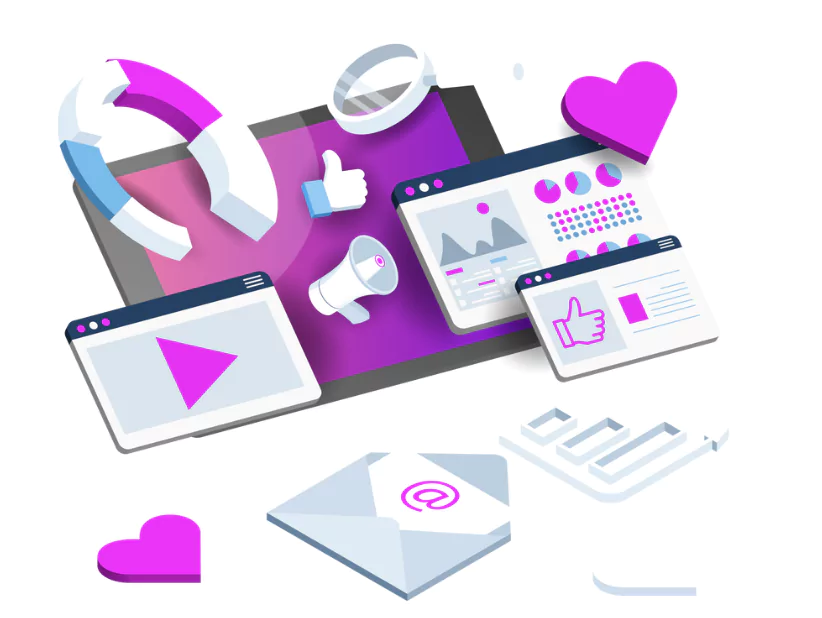Product research is not limited to the early stages of product development; it is a continuous process. Experienced product managers understand that consistent research helps businesses stay ahead of customer expectations, market trends, and competitors. Companies that perform exceptionally well prioritise ongoing product research to maintain their competitive edge.
Here, we will explain the fundamentals of product research and why it is essential for your team. You will also learn about different research methods, when to use them, and how to create an effective research plan. Additionally, it offers real-world tips to help you refine your approach and achieve better results.
What Is Product Research?

Product research involves gathering, analyzing, and interpreting data to guide strategic decisions about a product or feature. Whether you’re developing something new or enhancing an existing product, this process is vital for designing products that align with market demands and customer expectations.
Key aspects of product research include:
- Assessing market demand
- Analyzing competition
- Understanding the needs, preferences, and pain points of your target audience
The primary objective is to create user-centric products, minimize risks, and boost customer satisfaction. Product research isn’t a one-time activity, it’s an ongoing process conducted before and after a product launch. This ensures continuous improvement and keeps the product in sync with evolving market trends and customer needs.
Why Do Product Teams Need Product Research?
Product teams perform different research activities based on various factors, development stage, and more. Product research eliminates the higher risk of product failure and reduces it by a significant amount. With product research using various digital product development tools you can make data driven decisions.
If you have a product idea and you want to see how it will perform in the market then product research is the best option you have. Conduct deep analysis and research on your competitors and make sure you stand out in the competitive market. Product research makes it easy for the product teams. It optimises the product development process and continues improving products with iterations.
Types of Product Research

Product research varies based on the development stage and the insights you aim to gather. Each type shares similarities but focuses on different aspects to address specific goals.
1. Market Research
Market research analyzes the market size, trends, competition, and customer demographics within a target market. It helps you determine if your product has potential, uncover opportunities, and refine your product and marketing strategies.
2. Customer Research
Customer research focuses on understanding customer needs, preferences, and behaviors. By identifying these factors, you can design products that meet expectations and solve real problems effectively.
Read More: What is a Product Feature? Plus tips, templates, and examples
3. User Research
User research examines how users interact with your product. It collects insights into user behavior, motivations, and pain points to enhance usability and improve the overall user experience.
4. Product Discovery
This research identifies and validates ideas for new products or features before development. It reduces risks by ensuring assumptions align with user needs and business goals.
5. Continuous Product Discovery
In this approach, product teams integrate discovery into their daily workflows. Insights are continually gathered to validate assumptions and ensure every feature adds value for users while supporting business objectives.
6. Pricing Research
Pricing research determines the ideal price point for your product by analyzing market demand, competitor pricing, and customer willingness to pay. The aim is to maximize revenue while staying competitive and meeting customer expectations.
Read More: Different Product Development Methodologies You Need To Know
Product Research Methods
Choosing the right product research method depends on your development stage, research goals, and available resources. The following are the most effective methods:
1. Surveys
Surveys are a cost-effective way to gather insights directly from customers.
- Product Surveys: Learn about customer frustrations, favorite features, and desired improvements. Compare these aspects with competitors’ products.
- NPS Surveys: Use quarterly Net Promoter Score (NPS) surveys with open-ended questions to generate ideas for new features or products.
Surveys can be shared via email, in-app notifications, or website pop-ups for convenience and efficiency.
2. In-App Feedback
Real-time feedback collected through in-app surveys helps address user concerns and evaluate the impact of updates or features. It’s an excellent tool for continuous product improvement.
Read More: Product positioning: Tips, templates, and examples
3. Customer Reviews
Unprompted feedback on e-commerce sites, social media, or review platforms provides actionable insights. Always respond to reviews to build customer trust and engagement.
4. Voice of Customer (VoC) Analysis
VoC analysis captures customer needs, preferences, and experiences to refine product development and customer service. Consistently collecting and analyzing VoC feedback ensures better alignment with user expectations.
5. Product Analytics
Internal product analytics track key metrics such as:
- Product adoption
- User retention
- Customer churn
- Lifetime value
Focus on metrics aligned with your goals to avoid unnecessary complexity.
6. User Interviews
User interviews provide detailed insights and flexibility for customized questions. While resource-intensive, they yield invaluable data for improving user experience. Effective recruitment is critical for this method.
7. Focus Groups
Engage small groups of potential or existing users to explore optimal pricing, must-have features, and missing functionalities. Third-party moderators or online surveys can help minimize bias.
8. Concept Testing
Survey users about a new product idea to gauge interest and purchase intent. This versatile method works well through online surveys, phone interviews, or real-life interactions.
9. A/B Testing
Compare two product versions to identify which performs better. This method is ideal for refining features during the development stage to enhance user experience.
10. Usability Testing
After creating a Minimum Viable Product (MVP), usability testing helps identify issues by observing users as they interact with the product. It ensures the design is intuitive and user-friendly before finalizing the product.
Using these methods strategically allows you to collect meaningful data, make informed decisions, and deliver products that meet user expectations and business goals.
How to Conduct Product Research?

Conducting effective product research is the cornerstone of creating a successful product. The following is the process and outlines best practices to help you get started.
Step 1: Define Your Research Goals
Begin by clearly stating what you want to achieve. Are you looking to fill market gaps, validate product ideas, or improve an existing product? Setting clear objectives will guide your entire research process.
Step 2: Understand Your Target Audience
Identify who your product is for by analyzing their demographics, preferences, and behaviors. Create detailed user personas to understand their needs better.
These personas should include usage patterns, preferences, and decision-making habits. Tools like surveys or in-product forms can help you collect this data effectively.
Read More: Product Development Strategy: How To Create A Winning Strategy
Step 3: Select the Right Research Methods
Combine quantitative and qualitative approaches for comprehensive insights:
- Quantitative: Surveys, metrics analysis, and statistical data.
- Qualitative: Interviews, focus groups, and customer observations.
- Secondary Research: Study competitor data, market trends, and existing reports.
Step 4: Conduct the Research
Put your chosen methods into action. Ensure that the data you collect is accurate and unbiased. Utilize in-product surveys or third-party tools to streamline data collection.
Step 5: Analyze Data and Derive Insights
Examine your findings to uncover trends and actionable insights.
- Use quantitative data to identify recurring patterns and statistical trends.
- Leverage tools like customer feedback analytics platforms to organize and interpret qualitative data efficiently.
- Prioritize improvements based on these insights to enhance the product.
Step 6: Validate Your Ideas with Users
Test your concepts with real users to gather genuine feedback. Conduct interviews, usability tests, and focus groups. Minimize bias by asking behaviour-based questions, such as: “Can you describe the last time you used a similar product?” This approach captures actual behavior instead of hypothetical responses.
Step 7: Build and Test Your MVP
Develop a Minimum Viable Product (MVP) to test functionality and usability. Use methods like A/B testing, heatmaps, and user flows to refine the product. Ensure thorough quality assurance testing to identify and resolve any issues.
Step 8: Continue Research After Launch
Product research doesn’t end with the launch. Continuously gather user feedback to identify bugs, refine features, and adapt to market trends. Stay connected with your audience and evolve with technological advancements.
Also Read:
- What is Product Marketing? The Ultimate Guide
- Product Launch Strategy: A Comprehensive Guide for Success
- What is Product Market Fit? | Definition and Examples
- Product positioning: Tips, templates, and examples
Learn Product Management With PW Skills
Get your hands on one of the most effective Product Management Course with PW Skills. Learn integrating AI into your product development projects and boost your productivity by 10x more. This course is especially tailored for individuals who want to explore diverse opportunities in product management. Get in-depth tutorials, case studies, industry mentors, and more.
Build your career with a wide range of opportunities from complete career assistance with module assignments, quizzes and more to help you strengthen your concepts of product management. This product management Course will also offer industry recognized certifications after you complete the course.
Product Research FAQs
Q1. What is product research?
Ans: Product research is the process of collecting and analyzing data to guide decisions in developing or improving products that meet market demands and customer expectations.
Q2. Why is product research important?
Ans: It minimizes risks, helps create user-focused products, identifies market trends, and boosts customer satisfaction by aligning with their needs.
Q3. What are the main types of product research?
Ans: Key types include market research, customer research, user research, product discovery, continuous product discovery, and pricing research.
Q4. How can I gather product research data?
Ans: Use methods like surveys, in-app feedback, customer reviews, interviews, focus groups, product analytics, and usability testing to collect actionable data.
Q5. When should I conduct product research?
Ans: Product research should be conducted at all stages, from ideation to post-launch, to ensure continuous improvement and market relevance.

